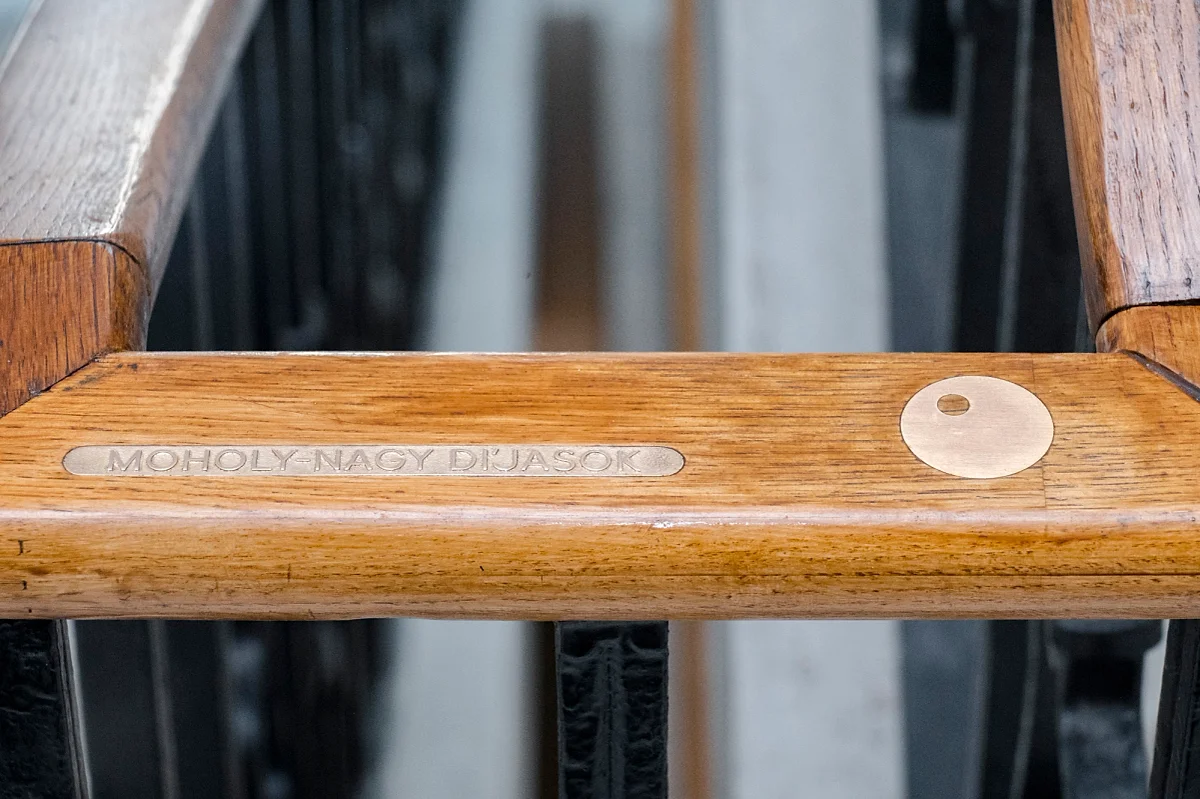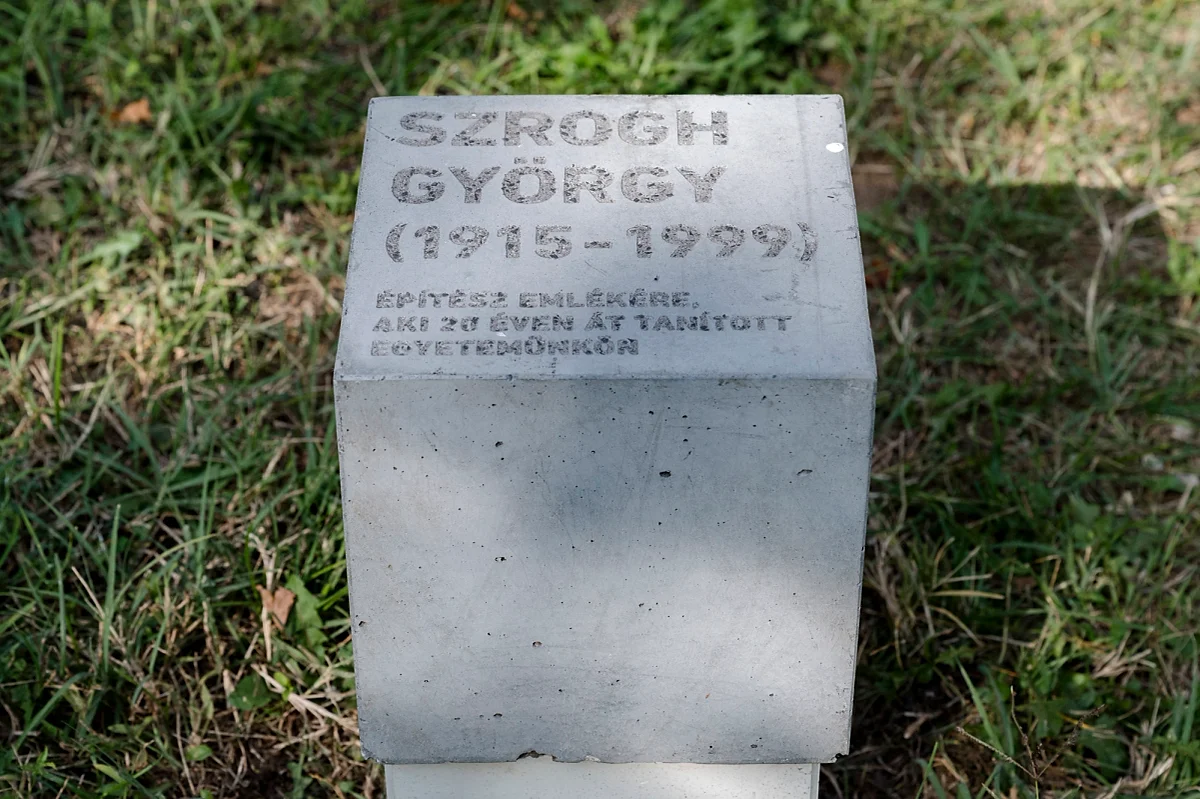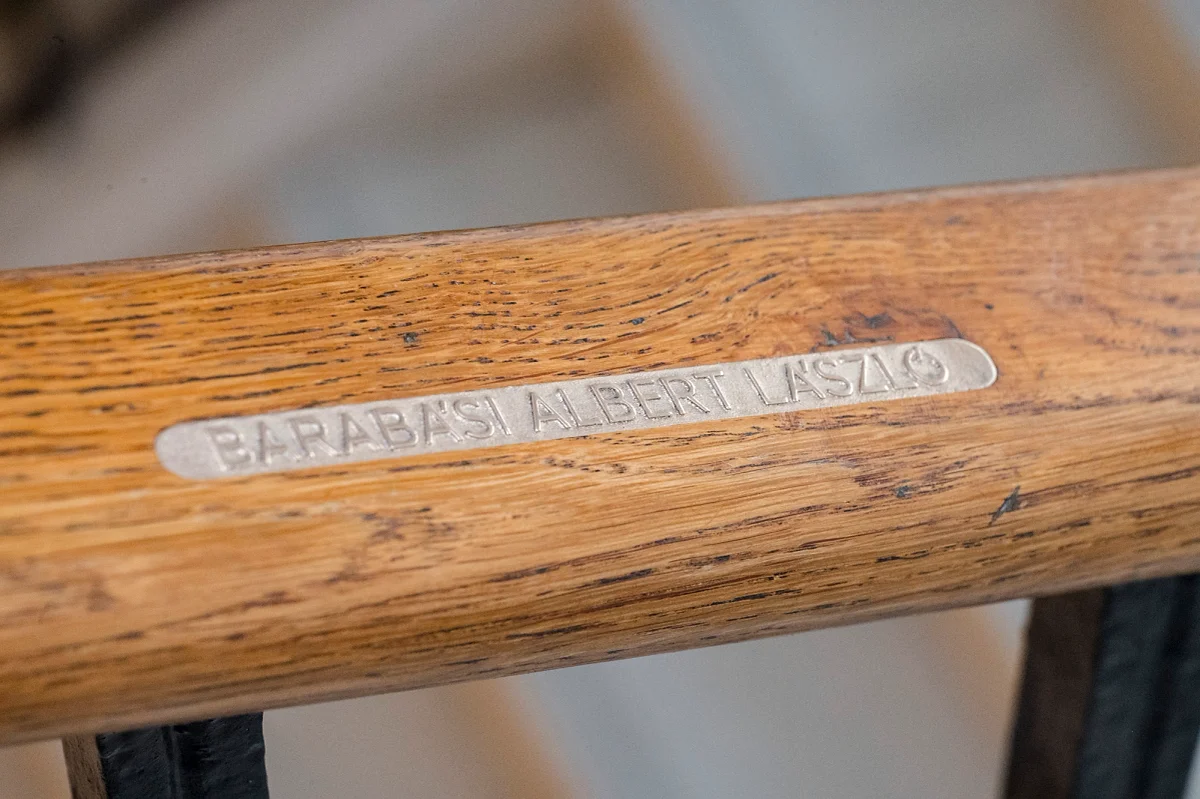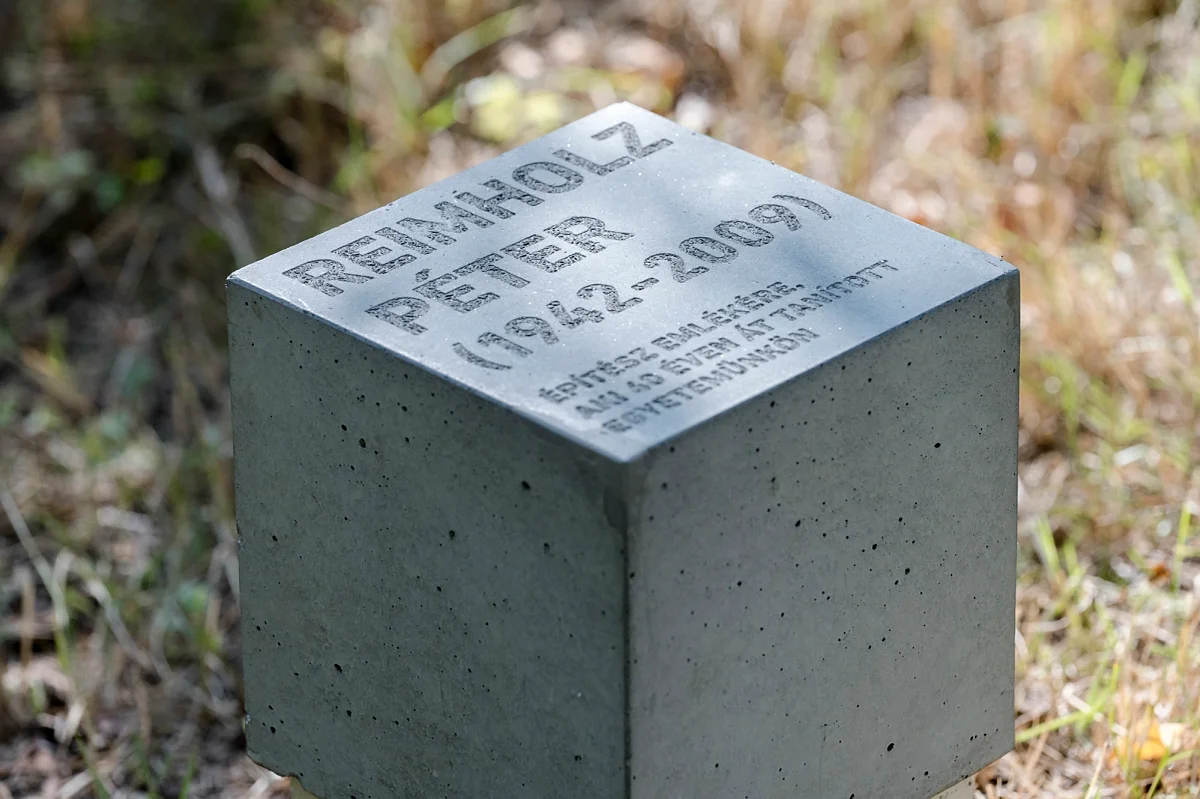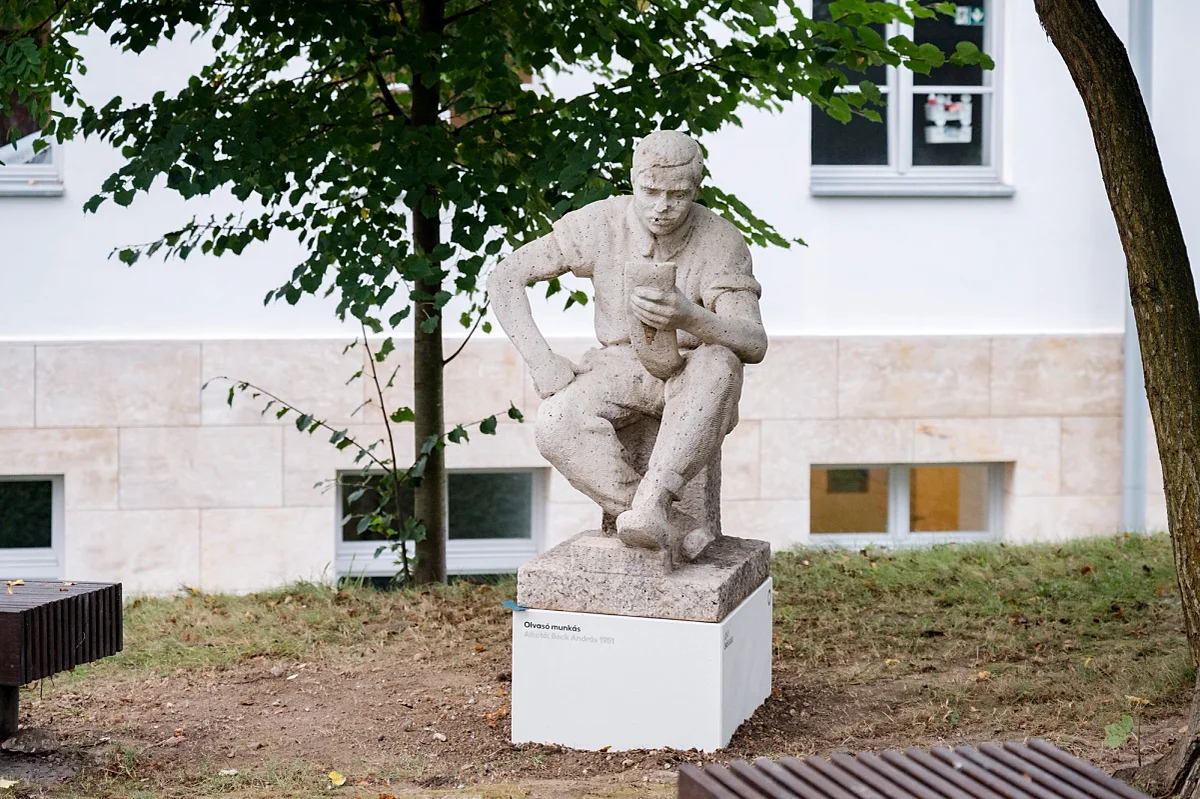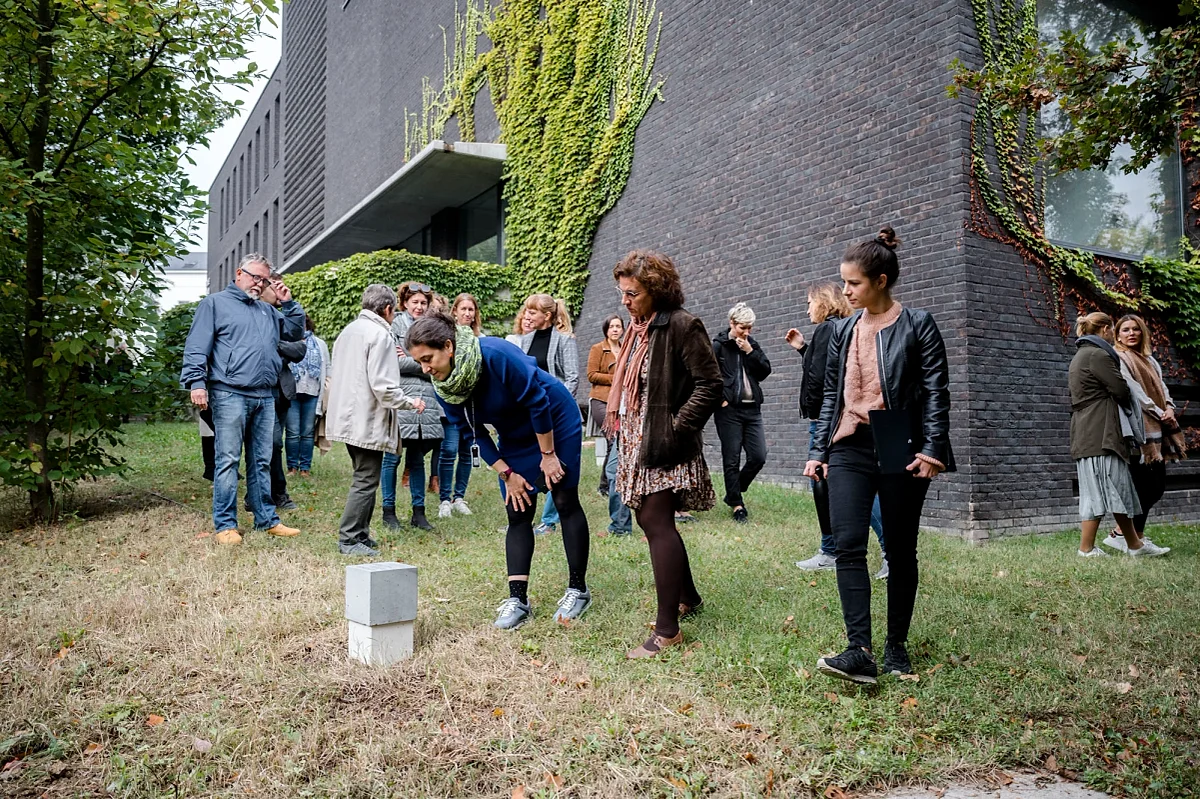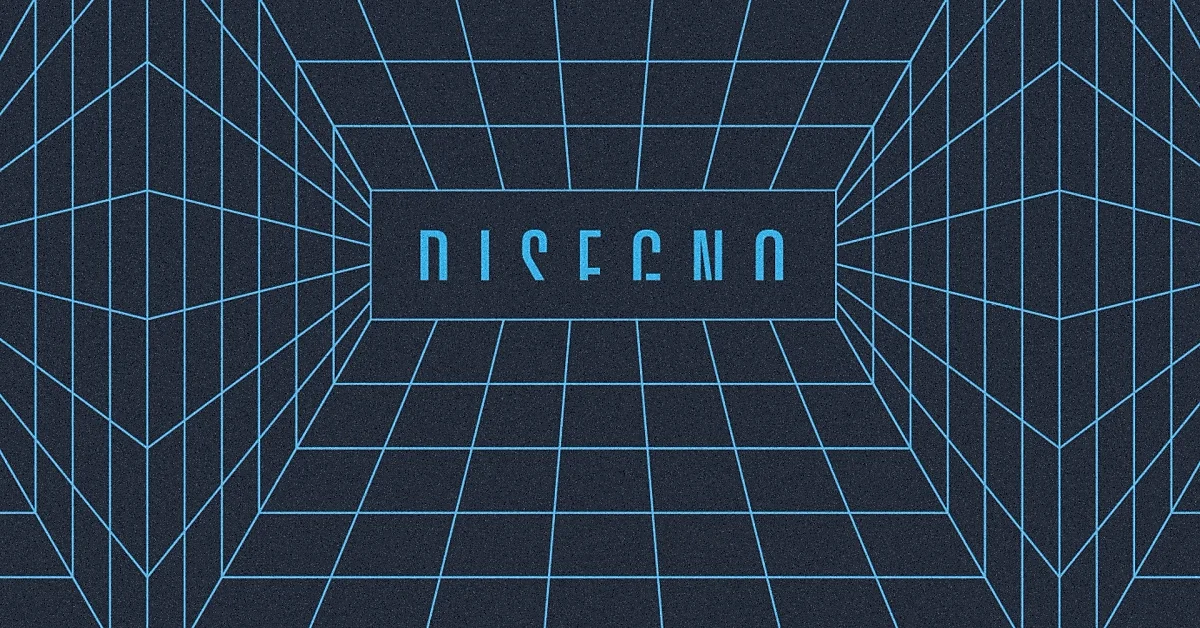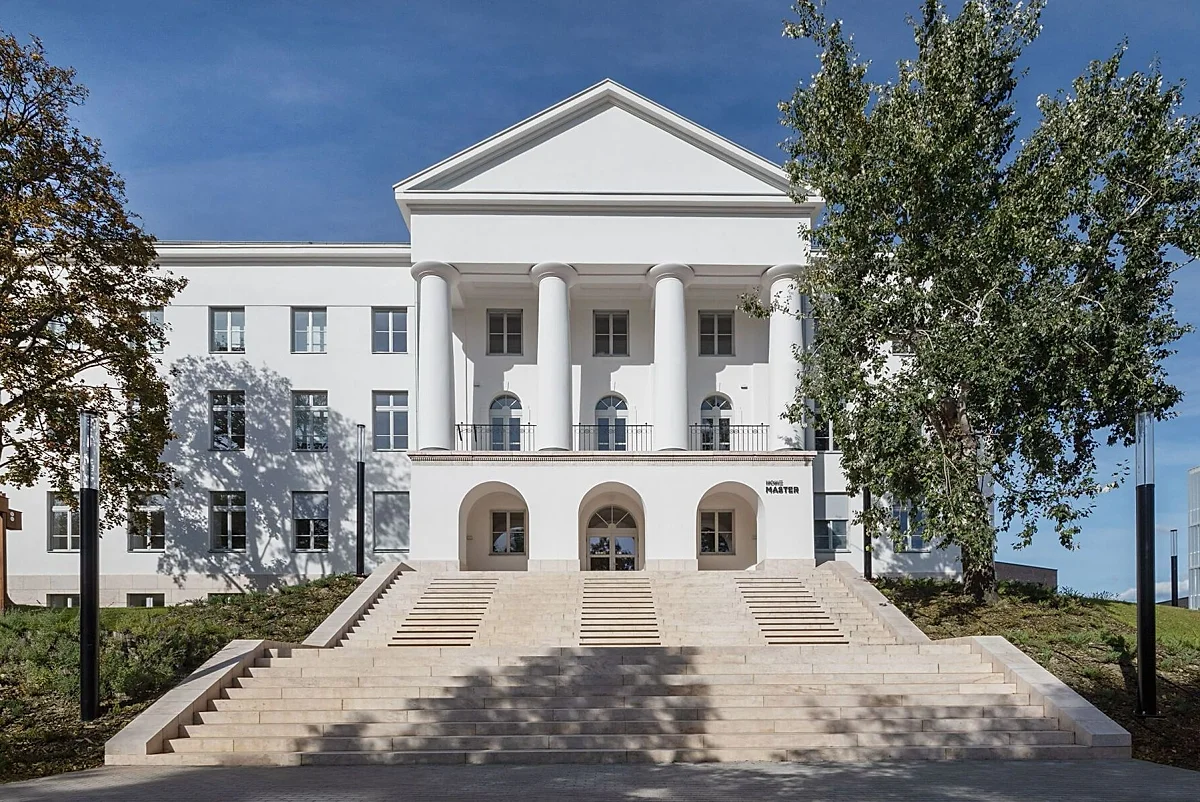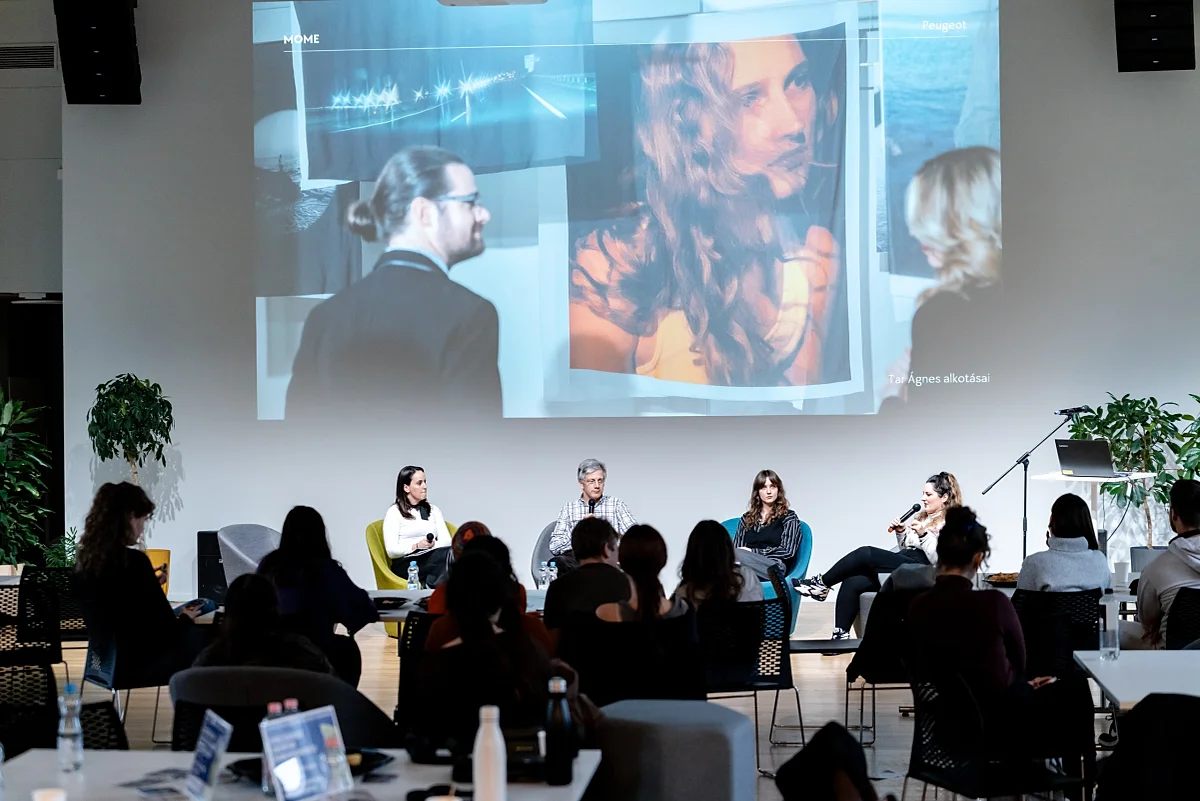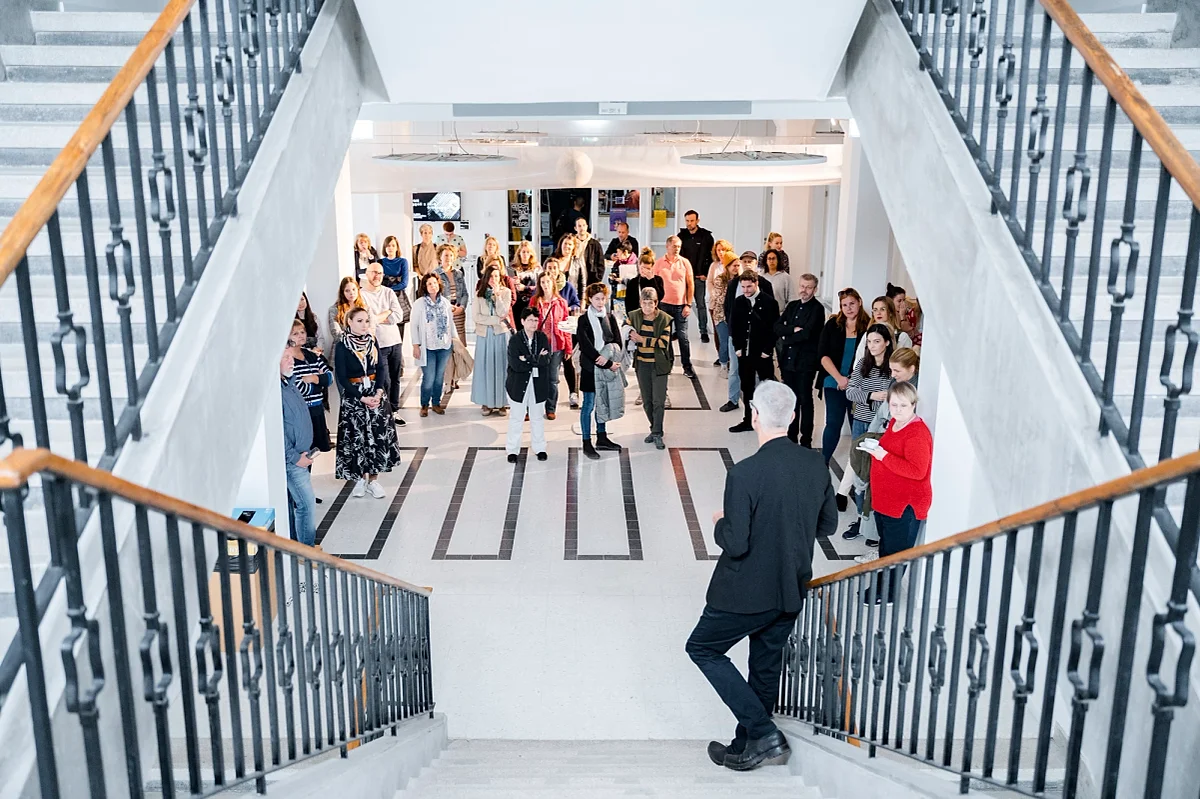
MOME launches its Future Heritage programme
The Moholy-Nagy Stairs was unveiled first. The names of our Moholy-Nagy laureates are slowly revealed to us on the banister with every step as we climb the stairs, following in the footsteps of our eponym. Since 2006, the award is presented each November to individuals whose outstanding creative activity is founded on the same values as those of the university and its eponym. Previous Moholy-Nagy laureates include world-famous Hungarian-born designer Stefan Lengyel, inventor of the Rubik’s Cube Ernő Rubik, one of the greatest product designers of our age Dieter Rams, who became known worldwide as Braun’s lead designer, art historian Krisztina Passuth, network researcher Albert-László Barabási, and architect and our teacher Zsófia Csomay.
The small concrete cubes and sculptures located next to the building honour the memory of our great role models – our architecture teachers. Péter Reimholz, who had been teaching at MOME for over 40 years, and György Szrogh, who had been heading the former Architecture Department for 20 years from 1966, each received a concrete cube in the park. Sculptures previously located here will soon be returned to the Campus park, including the Reading worker, a statue created by András Beck in 1951, and already been moved to a new, impressive spot, and the bust of art historian, prominent teacher and later rector of the Hungarian College of Applied Arts Frigyes Pogány, which will find its true place in spring 2024.

